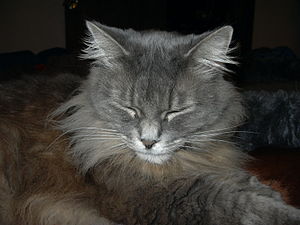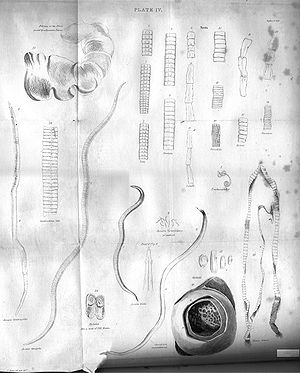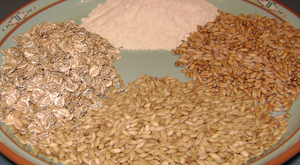
This image shows a young mixed-breed dog. The parents are a white shepherd dog and an alsatian dog. (Photo credit: Wikipedia)
A dog with diarrhea is probably a lot more miserable than the owner faced with cleaning up multiple accidents in the house. While one accident might not be noteworthy, the culprit behind diarrhea is often medical.
What Causes It?
Experts define diarrhea in dogs as passing loose or unformed stools. It often includes many bowel movements and huge amounts of stool.
Quite a few factors cause canine diarrhea. The most common are food intolerance, parasites, gastroenteritis and viruses. Bacteria like E. coli sometimes also cause diarrhea and other serious problems in dogs. The color, odor, frequency, consistency and presence/absence of blood of the stool can suggest the likely cause.
Treatment Options
A dog owner often has a choice between using traditional medical treatments or natural options.
Some traditional treatments come with potential side effects. For example, antibiotics often prescribed—albendazole, sulfa, metronidazole and febantel—can themselves cause diarrhea. Treatment with IVs and catheters is uncomfortable for the dog and expensive. Many owners would prefer a natural treatment if one is available.
Natural dog diarrhea treatments strive to eliminate diarrhea in dogs without side effects. They normalize the dog’s stool and increase overall health.
Natural Treatments
There are two main types of natural therapies for canine diarrhea:
Withholding food
Owners can withhold food for 24 hours when a dog has eaten something not on anybody’s approved list. A bland diet of cooked rice and chicken or cooked rice with ground beef should follow, on the next day.
When an allergy to or an intolerance of a substance in a commercial dog food is the cause, changing to a natural food often resolves the problem.
Nutritional supplements
These natural supplements can benefit a dog’s digestive tract:
- L-Glutamine—The amino acid and fuels cells in the lining of the intestinal tract.
- Slippery elm—This herb neutralizes stomach acid and soothes inflammation.
- Saccharomyces boulardi—A yeast, it functions as a probiotic.
- N-acetyl-glocosamine—It soothes the bowel lining to treat several inflammatory digestive conditions.
- Lactobacillus sporogenes—This probiotic treats bacterial overgrowth.
- Deglycyrrhizinated licorice (DGL)—It boosts blood flow to the intestinal lining and reduces muscle spasms.
- Digestive enzymes. Missing from commercial dog food, they’re necessary for proper nutrient absorption.
Before beginning any treatment for diarrhea in dogs, it’s important to consult your veterinarian.








